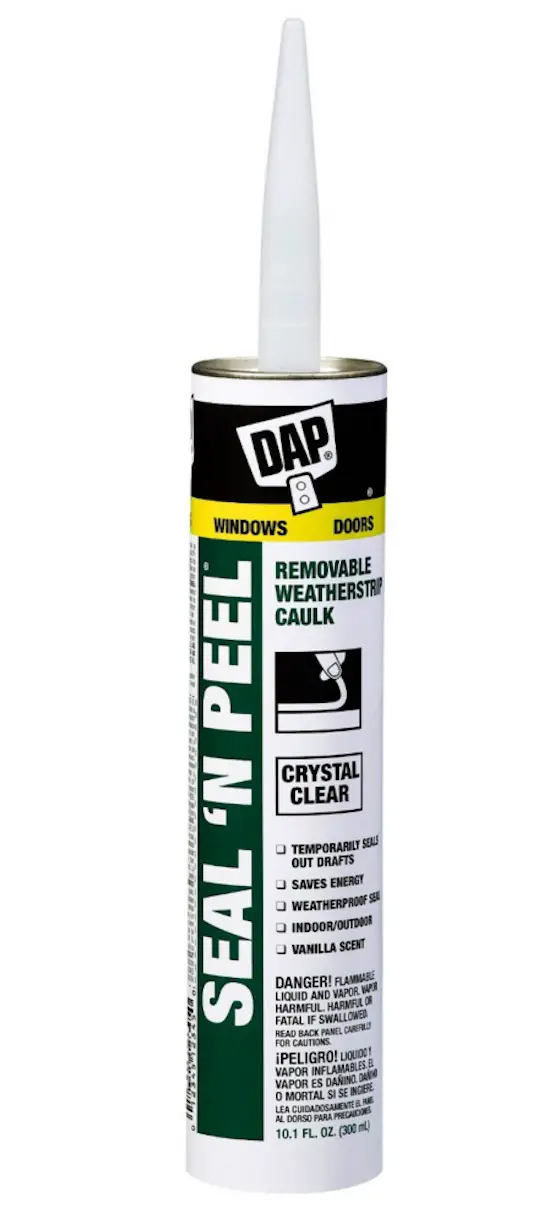Caulk Energy Savings
Last night while helping my wife Kathy get dinner ready she said, "I saw one of your peers on a national news morning show today." (This was from my December 8, 2015 Newsletter.)
"Really? What was he showing?"
"He was talking about these caulks where you can actually caulk your window to the frame to stop air leaks. Evidently in the spring, you can then remove the caulk. Is that a good idea?"
I started to do a slow burn inside.
Why?
For most of my career as Ask the Builder - and even back in my building career - I've had to fight against questionable information being broadcast by many.
"Well, if the 'expert' was saying people should do it to save money, you need to step back and do the math. I maintain it's a foolish idea. What's more, was there a close-up camera shot of the caulk he was using? It's entirely possible he got PAID over four figures to go on the show and hawk that product."
What's the Truth?
You can go to Amazon.com and you'll discover several of these disposable caulks. CLICK HERE to see them.
Regular caulk is just a glue. Some are very strong glues. The chemistry of caulk can be easily modified so the glue is weak or strong. In this case, the manufacturers just want the caulk to barely stick so you can "peel" it off in the spring.
One manufacturer even names it that. Look at this image.

CLICK HERE to discover more about this product. But BE CAREFUL before you buy it. Read the rest of this article! Image credit: Amazon.com
The question you need to ask yourself is this:
"Is it a good financial decision to use caulks of this type?"
The Math
I've always stated you need to do the math.
If you're trying to use a caulk to caulk other cracks around window and door frames and other gaps in your home, then the math is a little harder to do. That's because you save some energy each year the caulk stays in place in the crack and continues to block air infiltration.
But in this case, it's somewhat easy. We have to do a little speculation, so hang with me.
When you decide to use a disposable caulk that you REMOVE in the spring, you're only looking at a tiny window of energy savings. Four, maybe five, months of energy.
Here's where you start.
What percentage of your energy loss is through just the gaps you're caulking? Unless you're a rocket scientist, you'll never be able to guess it correctly.
Here are facts we know. We know you have a fixed energy loss through:
- your ceiling
- your walls
- your floors
- through the glass in your windows
- other cracks you're not caulking
- other spots I didn't mention
So let's just make a simple assumption that you're losing maybe two percent of your energy through the gaps where the window sash meets the frame.
Remember, you should NOT caulk all the windows in a room - especially bedrooms - as you might need to use one as an emergency exit in a fire or attack from a radical Islamic terrorist during a home invasion. CLICK HERE if that offends you. But I digress.
Now let's look at your heating bills. What do you spend per heating season to keep warm?
I'd say, on average, you might spend $1,500.00.
You can figure this out somewhat easily by looking at your energy bills.
If you heat with natural gas, look at your bills from May through August for your baseline gas usage when you don't have your furnace on. That gas on those bills is for your hot water, cooktop, dryer, etc. You use all of this in the winter too.
Now look at your October - April bills and SUBTRACT your baseline average gas usage amount from each of those months.
That's roughly what you pay for heating your home if you live north of the equator.
Add up those monthly amounts. Is it $1,500.00, or less?
Now, let's apply the two-percent savings.
Two percent multiplied by $1,500 equals $30.00.
Each of the tubes of caulk above are selling for $5.60 or so now in December of 2015.
Do you think you'll use at least five of these tubes around your home to caulk all the windows?
If so, you don't experience a sizable energy savings.
You LOSE money by wasting your gasoline and time to go get the caulk.
If you PAID someone to do it, then you're really in the hole.
Remember, you NEVER save a PENNY on any energy improvement until such time as you RECAPTURE the money you spent doing the improvement in actual energy savings. If you disagree with that, CLICK HERE.
5 Responses to Caulk Energy Savings